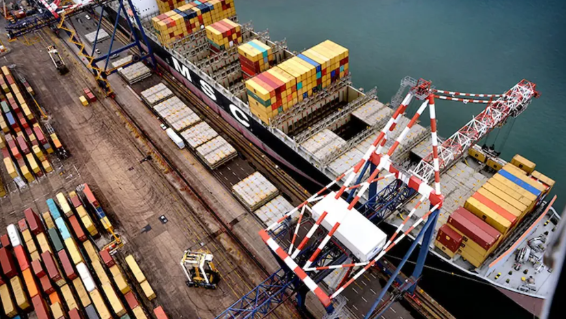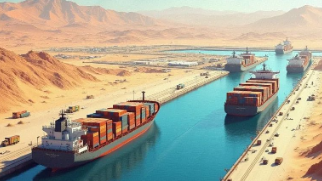Container transport operators at Nhava Sheva Port have recently raised concerns about prolonged vehicle turnaround times and declining operational efficiency. This pressure largely stems from an imbalance between the port's sea and land transportation capacities. Together with Mundra Port, Nhava Sheva handles approximately 60% of India's container trade.
Last month, Nhava Sheva's container throughput surged by 23% year-on-year due to shipping companies expanding their networks, deploying larger container vessels, and exporters rushing to maximize shipments before the fiscal year ends on March 31.
Industry sources point out that vessel rerouting caused by the Red Sea crisis has led to ships arriving in clusters, further straining the port's logistics, which are supposed to function smoothly. Although intermodal rail services have improved, road transport remains the primary mode for container movement at Nhava Sheva, making faster vehicle turnaround times crucial for maintaining supply chain fluidity.
Truck drivers largely blame the congestion on BMCT (PSA Mumbai), the newest terminal operator at Nhava Sheva, contradicting its claims that the issue has been resolved.
The Container Operators Welfare Association, representing port container truck owners, stated, “Traffic congestion is causing severe inconvenience to our members, drivers, and the trade community.”
However, PSA clarified to trade stakeholders that the “intermittent congestion” is due to fluctuations in terminal throughput rather than issues at any single terminal.
The Singapore-based operator explained, “We remain focused on improving gate and yard efficiency, but there is always a limit to how much we can handle at any given time. Therefore, we urge all parties to coordinate shipments more evenly to reduce truck waiting times.”
“We have expanded capacity to accommodate expected trade growth and additional demand, but when trucks arrive in overwhelming numbers, bottlenecks are inevitable,” the company added.
The association warned that continued truck delays could lead to loaded containers being denied shipment.
Data shows that from April last year to January this year, BMCT handled 870 container vessel calls, significantly higher than the 704 calls in the same period last year, with container throughput soaring from 1.7 million TEUs to 1.84 million TEUs.
Meanwhile, the Red Sea crisis has led to a sharp increase in transshipment volumes at Nhava Sheva, further pushing up port throughput.
Additionally, major shipping lines, especially Maersk, are now deploying ultra-large container vessels on Indian routes, bringing in significantly larger container exchanges per call.
In response, PSA is set to launch the second phase of its expansion project at Nhava Sheva, adding 2.4 million TEUs of handling capacity, which is expected to meet short-term cargo growth.
However, if freight volumes continue to rise, pressure on inland transportation may challenge these expectations.

Last
Transnet Invests ZAR 3.4 Billion: A Major Transformation for Durban Port!
Recently, Transnet announced a major initiative, committing a substantial investment into the Durban Container Terminal (DCT) to r

Next
Reviving Prosperity: 47 Ships Return to the Suez Canal
According to Reuters and Bloomberg, since early February, 47 ships have rerouted back to the Suez Canal, signaling a gradual recov
